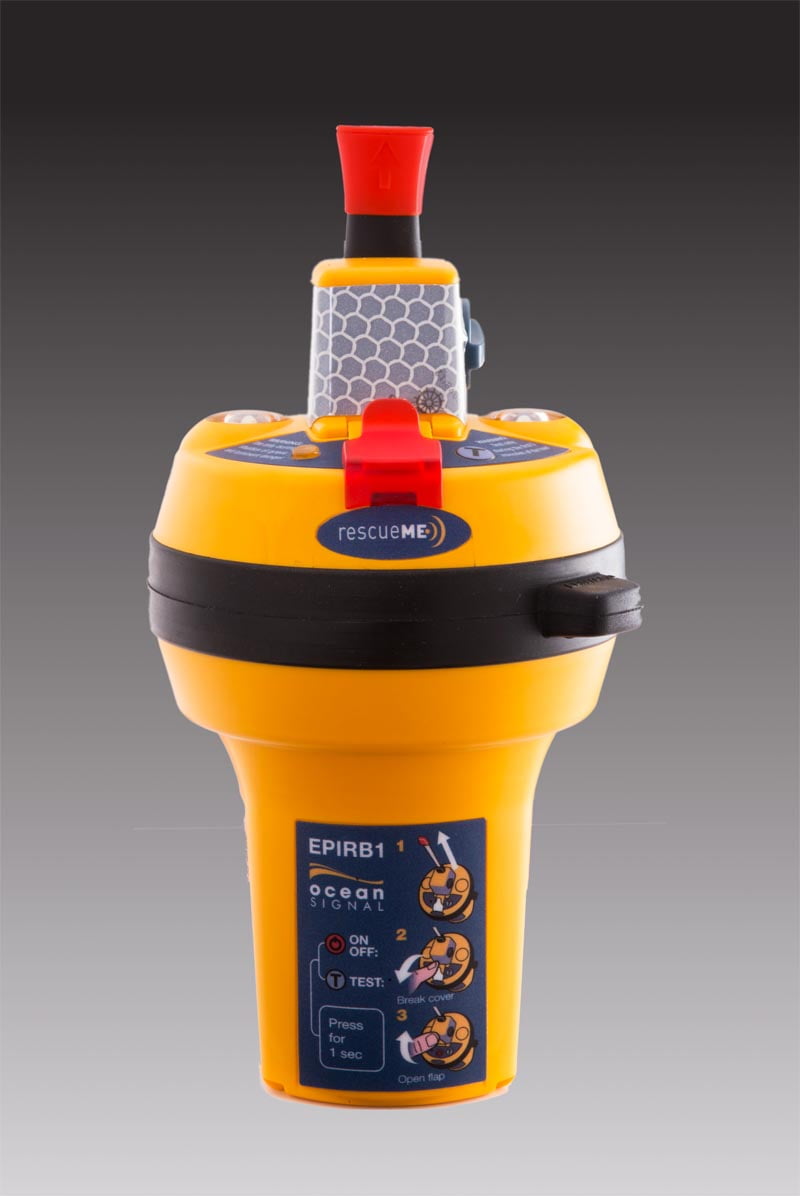Communication and safety specialist reminds boaters of the importance of life-saving 406 MHz technology
On ‘406Day’ this April 6th, Ocean Signal issues important safety advice about the benefits and responsibilities of owning a 406 MHz beacon to help boaters prepare for the season.
The annual awareness day was initiated by Ocean Signal’s sister company, US-based ACR Electronics, in 2013 to celebrate the over 40,000 lives saved* by using 406 MHz beacons and the Cospas-Sarsat Satellite system. It is intended to raise awareness about the life-saving technology used by Emergency Position Indicating Radio Beacons (EPIRBs) and Personal Locator Beacons (PLBs) and to help people understand how to register, use and maintain their beacons correctly.
James Hewitt, Sales and Marketing Manager, Ocean Signal, said: “406Day is a really good opportunity to highlight some important safety checks and procedures for beacon owners. EPIRBs, for the vessel, and PLBs, which are registered to a person, are a fast and effective way to send an alert and enable the search and rescue authorities to identify and locate a casualty. However, it is vital that these essential safety devices are properly registered and maintained so that the beacons can be relied upon to function correctly when activated. 406 MHz signals save lives, but it is a technology that requires responsibility.”
Ocean Signal advises beacons owners to use April 6th as an annual reminder to follow these best practices for beacon ownership:
• Register and update your 406 MHz beacon registration
All beacon owners should register their device with the appropriate authorities. UK users of EPIRBS and PLBs should register their details on the UK Beacon Registry at www.gov.uk/406beacon. This free and simple registration will speed up a rescue and provide Search and Rescue with information about you and your vessel which is vital in an emergency. In other countries contact your local authority. Details can be found at www.406registration.com/countriessupported.aspx.
• Check your 406 MHz beacon battery expiration dates
Users must check the expiry dates to ensure the EPIRB or PLB will function correctly when required in an emergency. When selecting your beacon, key considerations include the added convenience of user replaceable batteries and the reassurance of a long battery operating life. Ocean Signal leads the industry in these areas of innovation. The SafeSea E100G EPIRB features user replaceable batteries with a five-year replacement interval. The rescueME PLB1, meanwhile, has a seven-year battery life. The rescueME EPIRB1 has even longer battery life at a massive ten years between routine replacements.
• Test your 406 MHz beacon
You should test your EPIRB using the ‘self-test mode’ once a month to monitor the 406 MHz RF power, as well as the 121.5MHz homer RF power, synthesiser lock and battery voltage under load. Ocean Signal also recommends regular inspection to ensure: no obvious signs of damage, including the state of the antenna; secure mounting on the bracket or float free housing; the lanyard is not attached to any structures; the HRU (Hydrostatic Release Unit) in the case of a float free housing is within the specified expiry date; the EPIRB and mounting is cleaned, only using a damp cloth. It is also recommended to carry out routine testing of your PLB to ensure it is in good working order, using the specified ‘Test’ key. Ocean Signal suggests you do not test the GPS receiver more than once a year as it expends significant amounts of battery energy.
James Hewitt, Ocean Signal, added: “We recommend that most vessels carry an EPIRB, with integral GPS, particularly long-range cruising boats or those cruising outside VHF range. A PLB can also be used offshore, but is also appropriate in many other circumstances for users of smaller boats, RIBs or kayaks, for example. New innovations have enabled the development of extremely compact PLBs, such as our rescueME PLB1, which can be worn or attached to life jackets very easily which means it is easily accessible for quick activation if you fall overboard.”
EPIRBs and PLBs operate on the 406 MHz frequency. Each 406 MHz beacon transmits a unique digital code that identifies the type of beacon and allows registration data to be associated with the beacon. The registration data provides information such as the beacon owner, the type of vessel and emergency points of contact.
“406Day has not only created social media buzz but has also created useful content and has opened meaningful dialogue regarding safety precautions in the boating industry,” said Nichole Kalil, ACR Media Specialist. “406Day occurs during spring when people are gearing up for summer boating, so the timing to share boating safety messages is perfect.”
When sharing messages online regarding 406Day, use #savedbythebeacon and #406day.
For information about the full range of products available from Ocean Signal, please go to www.oceansignal.com.
*Source: Since the mid 1980’s 406 MHz beacons have saved approximately 40,000 lives worldwide.

